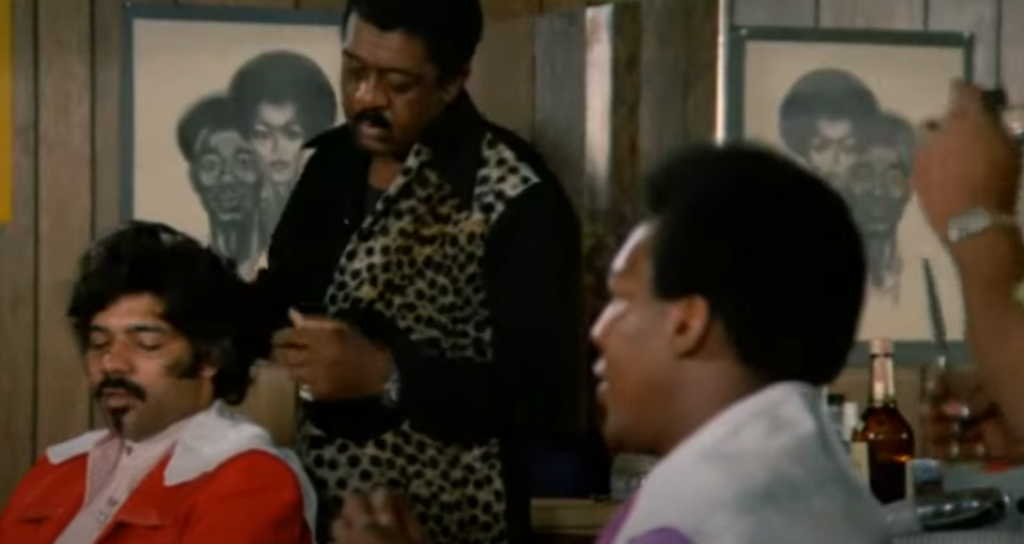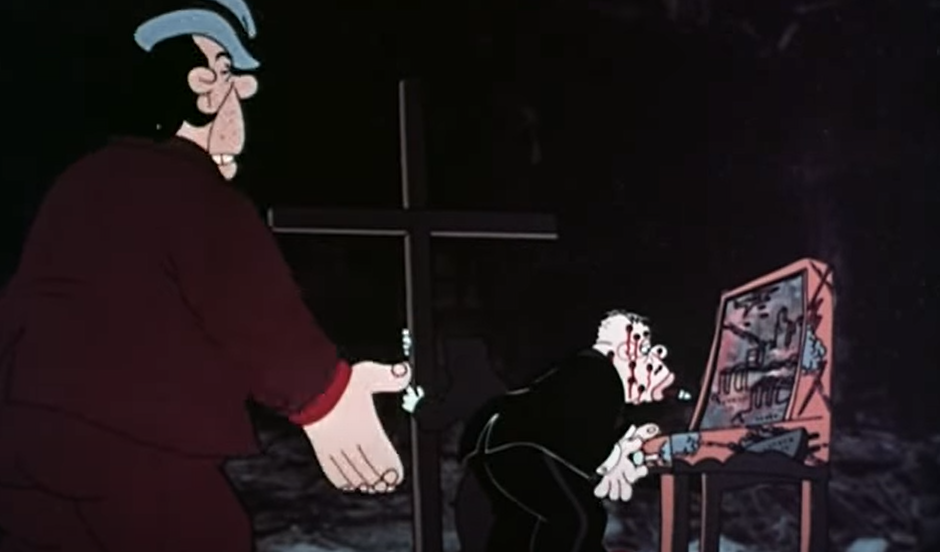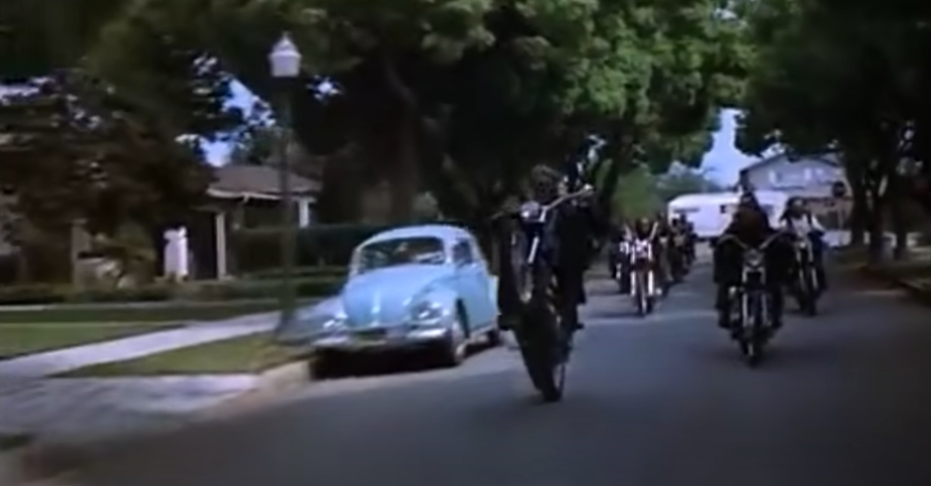The 1970s were a transformative time for the world of cinema. This period witnessed the emergence of a sub-genre known as blaxploitation, spotlighting African American city life with a mix of funk and soul music. Among these films, a distinct category highlighted the controversial lifestyle of pimps. These movies often utilized anti-heroes, outrageous costumes, flashy vehicles, and vivid, urban landscapes as a backdrop for narratives about power, sex, money, and survival. We delve into the fascinating world of 1970s pimp movies, exploring their cultural impact and the iconic films that made their mark.
The Birth of a Genre: Understanding Blaxploitation
In the early 1970s, a new genre emerged in the American film industry, one that would have a profound impact on cinema and African-American culture. Blaxploitation, a portmanteau of “black” and “exploitation,” was a film movement that aimed to target primarily African-American urban audiences, offering them representation, empowerment, and a voice in a predominantly white-dominated industry. Blaxploitation films broke new ground by featuring black actors in leading roles, exploring themes that resonated with the Black community, and employing unique stylistic elements.
Key Features of Blaxploitation
| Attribute | Description |
|---|---|
| Target Audience | Primarily African-American urban dwellers |
| Themes | Racism, poverty, drug abuse, and crime |
| Style | High drama, action, funk, and soul soundtracks |
| Representative Stars | Richard Roundtree, Pam Grier, Fred Williamson |
Target Audience
Blaxploitation films were intentionally made for African-American urban dwellers, who had long been underrepresented and misrepresented in mainstream cinema. By creating films that directly catered to this demographic, Blaxploitation pioneers sought to give them characters they could identify with, stories that mirrored their struggles, and portrayals that challenged stereotypes. This resonated deeply with the target audience, forging a strong connection between the films and the viewers.
Themes
Blaxploitation films fearlessly tackled important and often controversial themes that were relevant to the African-American community. The movies delved into issues such as racism, institutional oppression, poverty, drug abuse, and crime. By addressing these topics head-on, Blaxploitation films not only exposed the harsh realities faced by many Black individuals but also acted as a vehicle for social commentary and change.
Style
One of the defining aspects of Blaxploitation was its distinct style, both visually and musically. The films were characterized by high drama, intense action sequences, and an unapologetic approach to storytelling. Moreover, the soundtracks played a crucial role in shaping the atmosphere of the movies. Blending elements of funk and soul, these soundtracks became iconic and contributed to the overall appeal of Blaxploitation films.
Representative Stars
Blaxploitation launched the careers of several talented African-American actors who would go on to become household names. Richard Roundtree gained fame as the smooth and charismatic detective John Shaft in the “Shaft” series, while Pam Grier became an iconic figure through her roles in films like “Foxy Brown” and “Coffy.” Fred Williamson, known for his tough and rugged characters, also became a prominent star within the genre.
The Emergence of Pimp Movies
Within the broader Blaxploitation movement, a subgenre of films centered around pimps and their lifestyle emerged. These pimp movies offered a unique perspective on the realities of urban life, but they were not without controversy. Some films glorified the pimp lifestyle, portraying the characters as charismatic and powerful figures, while others took a critical stance, highlighting the exploitative nature of the profession and its detrimental impact on the community.
The Rise of Pimp Cinema

Pimp movies started gaining traction in the early 1970s, depicting urban environments teeming with corruption and crime. These films explored themes of survival, power, and dominance through charismatic characters.
The Mack (1973)
Directed by Michael Campus and starring Max Julien as the lead character Goldie, “The Mack” takes viewers on a thrilling journey through the criminal underworld as Goldie seeks to carve out a name for himself as an ambitious and enterprising pimp.
- The Storyline and Characters: “The Mack” revolves around Goldie, a man recently released from prison, who is determined to elevate his status as a pimp in the gritty streets of Oakland. Alongside his brother Olinga (played by Richard Pryor), Goldie encounters both friends and foes while navigating the dangerous world of crime. The movie’s character dynamics and their development provide a captivating insight into the struggles and ambitions of individuals entangled in the darker side of society;
- The Pimp Aesthetic: One of the most striking aspects of “The Mack” is its representation of the pimp aesthetic of the era. The film presents an authentic portrayal of the 1970s pimp culture, complete with flamboyant fashion, flashy cars, and extravagant jewelry. This unique visual style not only sets the tone for the movie but also establishes a memorable and iconic look that has endured in popular culture;
- Social Commentary: Beyond its portrayal of the pimp lifestyle, “The Mack” is notable for its thought-provoking social commentary. The movie sheds light on the socio economic issues faced by marginalized communities, particularly African Americans, during the 1970s. It explores themes of poverty, discrimination, and the struggle for survival, providing an insightful window into the harsh realities of that time;
- Memorable Quotes: “The Mack” is filled with memorable lines that have become legendary in cinematic history. Let’s take a look at some of the most iconic quotes from the movie:
| Quote | Character |
|---|---|
| “You wanna be a pimp, you gotta fly!” | Goldie |
| “Everybody’s got to have a little faith, my man.” | Olinga |
| “Blood is thicker than mud.” | Mama |
| “The only way you gonna learn about the streets is by livin’ on ’em.” | Slim |
Soundtrack: The film’s soundtrack, composed by Willie Hutch, is another highlight that adds depth and emotion to the storytelling. The soulful tunes perfectly complement the movie’s themes and contribute to the overall immersive experience.
- Impact and Legacy: “The Mack” not only captivated audiences during its initial release but also left a lasting impact on popular culture. Its influence can be seen in subsequent films, music, and fashion, demonstrating its significance in shaping the pimp genre and urban cinema.
Willie Dynamite (1974)
“Willie Dynamite” presented a character (played by Roscoe Orman) who was ambitious and ruthless, yet struggled with his own ethical compass. The movie highlighted the flamboyant lifestyle of a pimp while also emphasizing its destructive impact.
- The Plot and Character: At the center of “Willie Dynamite” is the titular character, Willie, a charismatic and determined pimp who aims to dominate the underworld. Roscoe Orman’s compelling portrayal brings Willie to life, showcasing his ambitions, charm, and undeniable street-smart persona. As the movie progresses, viewers witness Willie’s internal struggles with his ethical compass, as he grapples with the consequences of his actions and the impact of his profession on others;
- The Flamboyant Pimp Lifestyle: One of the film’s distinctive features is its vivid portrayal of the extravagant and opulent lifestyle of a pimp in the 1970s. The movie captures the glitz and glamor of the era, showcasing lavish outfits, flashy cars, and ostentatious jewelry that symbolize the image-driven world of Willie and his fellow pimps. The flamboyant visuals immerse the audience into the vibrant and sometimes seductive atmosphere of the pimp culture;
- Ethical Dilemmas and Inner Turmoil: Beneath the flashy exterior, “Willie Dynamite” delves into the ethical dilemmas faced by its protagonist. As a pimp, Willie exploits and objectifies women, a reality that the movie doesn’t shy away from portraying. However, it also humanizes Willie by showing his internal struggle and moments of doubt. This multidimensional character study adds depth to the film, elevating it beyond the typical pimp movie trope;
- Impact on Lives: The movie takes a somber turn as it addresses the devastating impact of the pimp lifestyle on the lives of the women involved. It highlights the exploitation, abuse, and vulnerability that these women face within the criminal underworld. By juxtaposing the luxurious facade with the harsh reality, “Willie Dynamite” delivers a poignant message about the dark side of the pimp profession;
- Memorable Scenes: “Willie Dynamite” features several memorable scenes that leave a lasting impression on viewers. Let’s explore some of these standout moments:
| Scene | Description |
|---|---|
| Fashion Show | A spectacular fashion show featuring extravagant outfits. |
| “Do It Right, Woman” Scene | Willie’s confrontational exchange with his former lover. |
| The Redemption Moment | Willie’s self-reflective moment, questioning his choices. |
- Symbolism and Cinematography: The film utilizes symbolism and striking cinematography to enhance its storytelling. Symbolic imagery, such as mirrors representing self-reflection and isolation, is cleverly employed to underscore Willie’s internal conflicts. The use of color and lighting contributes to the film’s atmospheric intensity, creating a visually compelling experience for the audience.
The Impact and Legacy of Pimp Movies

The controversial 1970s pimp movies left an indelible mark on popular culture, sparking discussions, challenging stereotypes, and influencing various artistic forms. From fashion trends to music genres and the birth of urban action films, these movies left a lasting impact that can still be felt today.
Fashion Influence
Pimp movies of the 1970s significantly impacted fashion trends, introducing a distinctive and flamboyant style associated with the pimp aesthetic. Some of the notable fashion influences include:
Impact on Fashion
| Fashion Item | Description |
|---|---|
| Fur Coats | Luxurious fur coats became a symbol of opulence. |
| Wide-brimmed Hats | Stylish and extravagant hats were popularized. |
| Platform Shoes | High-heeled platform shoes were a fashion staple. |
The audacious and extravagant outfits showcased in these films captured the imagination of audiences, inspiring the emergence of bold fashion choices that resonated with the era’s rebellious spirit.
Music Evolution
The soundtracks of pimp movies played a pivotal role in shaping music genres, particularly in African American communities. The movies contributed to the rise and evolution of the following music styles:
Impact on Music
| Music Genre | Description |
|---|---|
| Rap | Pimp movies influenced the emergence of rap music, with its poetic and socially conscious lyrics. |
| Hip Hop | Elements of pimp movie soundtracks can be seen in early hip hop, influencing its beats and rhythms. |
| R&B | The soulful and emotive nature of R&B was also impacted by the cinematic representation of the era. |
These genres, born out of the social context depicted in pimp movies, have since become integral components of the global music landscape.
Film Industry Transformation
Pimp movies paved the way for the birth of urban action films, creating a new genre that focused on gritty urban settings and criminal subcultures. These films offered a fresh perspective, tackling social issues while delivering thrilling narratives filled with intense action and drama. The influence of pimp movies on the urban action genre can be seen in iconic films like “New Jack City” and “American Pimp.”
Challenging Stereotypes and Encouraging Discussions
Despite their controversial nature, pimp movies played a crucial role in challenging stereotypes and encouraging conversations about social issues. By presenting complex characters and delving into the ethical dilemmas of their lifestyles, these films humanized individuals involved in the pimp culture. They sparked discussions on societal problems, such as poverty, racial discrimination, and gender dynamics, prompting viewers to confront uncomfortable realities.
Inspirations and Homages
The legacy of pimp movies extended beyond their initial release, inspiring later works that paid homage to the original narratives or explored the lifestyle from different perspectives. Filmmakers and artists continued to draw inspiration from these movies, further cementing their influence in contemporary culture.
Conclusion
Pimp movies from the 70s, despite their controversial nature, played an essential role in shaping the cinematic landscape. They allowed audiences to engage with narratives and characters that were far removed from mainstream cinema, opening up dialogues on socio-cultural issues and sparking a style revolution. Even today, their influence continues to resonate, shaping contemporary narratives and trends.
FAQ
Blaxploitation is a film genre that emerged in the United States in the 1970s. It aimed to cater to urban African-American audiences with films featuring a majority of Black cast and dealing with themes relevant to the Black community, often including crime, poverty, and racial tension.
Pimp movies added a layer of complexity to the blaxploitation genre. They introduced characters who navigated the underworld with a unique combination of style, street smarts, and raw ambition. These movies showed life on the streets, unfiltered, through the lens of anti-heroes who battled systemic racism and socio-economic disparity.
While many of the most iconic pimp movies, like “The Mack” and “Willie Dynamite,” were part of the blaxploitation movement, not all films featuring pimp characters from this era fall under this category. It’s important to analyze the broader context, themes, and target audience of a film before categorizing it as blaxploitation.
Yes, many modern films and television series pay homage to the style, music, and themes of 70s pimp movies. These include “Hustle & Flow,” “Pimp” (2018), and the television series “The Deuce.”




